A team of journalists, photographers and filmmakers document the evolving lives of communities in the Manu region of the Peruvian Amazon.
The hunter’s bare feet move soundlessly over the forest floor. He pauses, listening intently to the chorus of sounds for any irregularity that might betray the presence of his prey. To me the echoes of the Amazonian wilderness are a symphony of the unknown, but to his trained ears they are an index of the seemingly endless mass of living creatures that surround us. Suddenly he tenses, a momentary flexion of muscle before he languidly springs into action. Racing across a sprawling patchwork of vines and tree roots he reaches a clearing and in one relaxed motion strings an arrow to his wooden bow, takes aim and fires into the canopy. More than a hundred feet up a startled but relieved spider monkey scampers away, unharmed.
The scene may sound like a romantic tale of a different world, or perhaps a lost time. But in fact, Marcos Shumarapague is a contemporary resident of the Native Community of Yomibato, a Matsigenka settlement inside the restricted area of Manu National Park in Peru.
Upon realizing his prey has eluded him Marcos wipes his hands on his grey woolen slacks, checks his Casio digital watch and concludes it’s time for a short break. He pulls a stainless steel knife out of his Nike backpack and sharpens a few arrow points. He seems oblivious to the incessant clicks of the cameras held by a team of western photographers who have accompanied him on his early morning hunt. “Catching monkeys can be hard, you have to be quick, and quiet.” At these last words his eyes flash up at me knowingly. Certainly my plodding rubber boots had made a thundering cacophony of sound as compared to his agile footsteps.
Everything about the moment, from Marcos’ handmade bow and arrows fletched with the feathers of local tropical birds to his factory-made cotton clothing and the presence of gringo journalists here in the deep Peruvian Amazon reflects the changing reality of Manu National Park and its indigenous inhabitants.
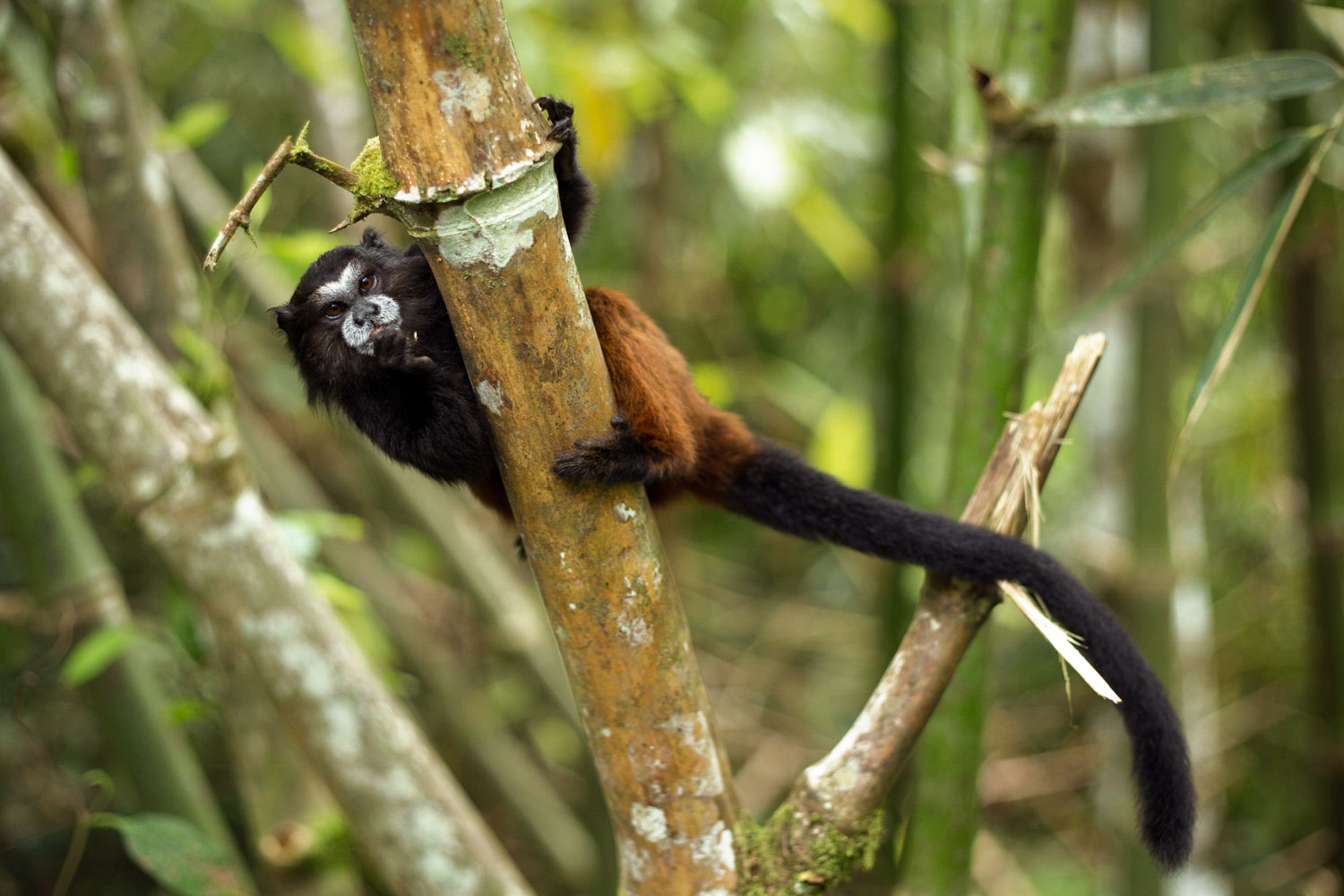
Manu National Park boasts one of the highest degrees of biodiversity in the world. Debates rage as to whether the presence of communities like Yomibato help to protect or further endanger wild animals such as this marmoset, seen swinging from a branch along the Manu River. Photo: Brett Monroe Garner
Manu National Park is the epitome of the adventure travel destination. Nestled in the heart of the Peruvian Amazon, it evokes all of the essential tropes of the genre. It is the perfect mix of remote, mysterious, dangerous, and exotic. But, perhaps most importantly, Manu provides travelers with a sense that what they are seeing and experiencing is somehow pure, untouched, or authentic. Of course the great irony of adventure travel is that the very elements enthusiasts seek are diminished by their finding. Fresh tracks can be made only once. A pristine beach visited by too many sunbathing tourists becomes tainted; an abandoned temple is debased when flanked by a gift shop and a café.
But Manu Park is not abandoned, and for the more than 500 people who live in communities within park boundaries negotiating a changing way of life is part of their daily reality. Despite its remote location, Manu receives over nine thousand tourists annually. Its additional value as a research area for biologists, ecologists, conservationists and anthropologists makes it paradoxically one of Peru’s most remote and heavily visited destinations. The high degree of interest and frequency of visits by foreign researchers and tourists have thrust the once-secluded and relatively inaccessible communities of the region into an evolving and sometimes uncomfortable relationship with the outside world.
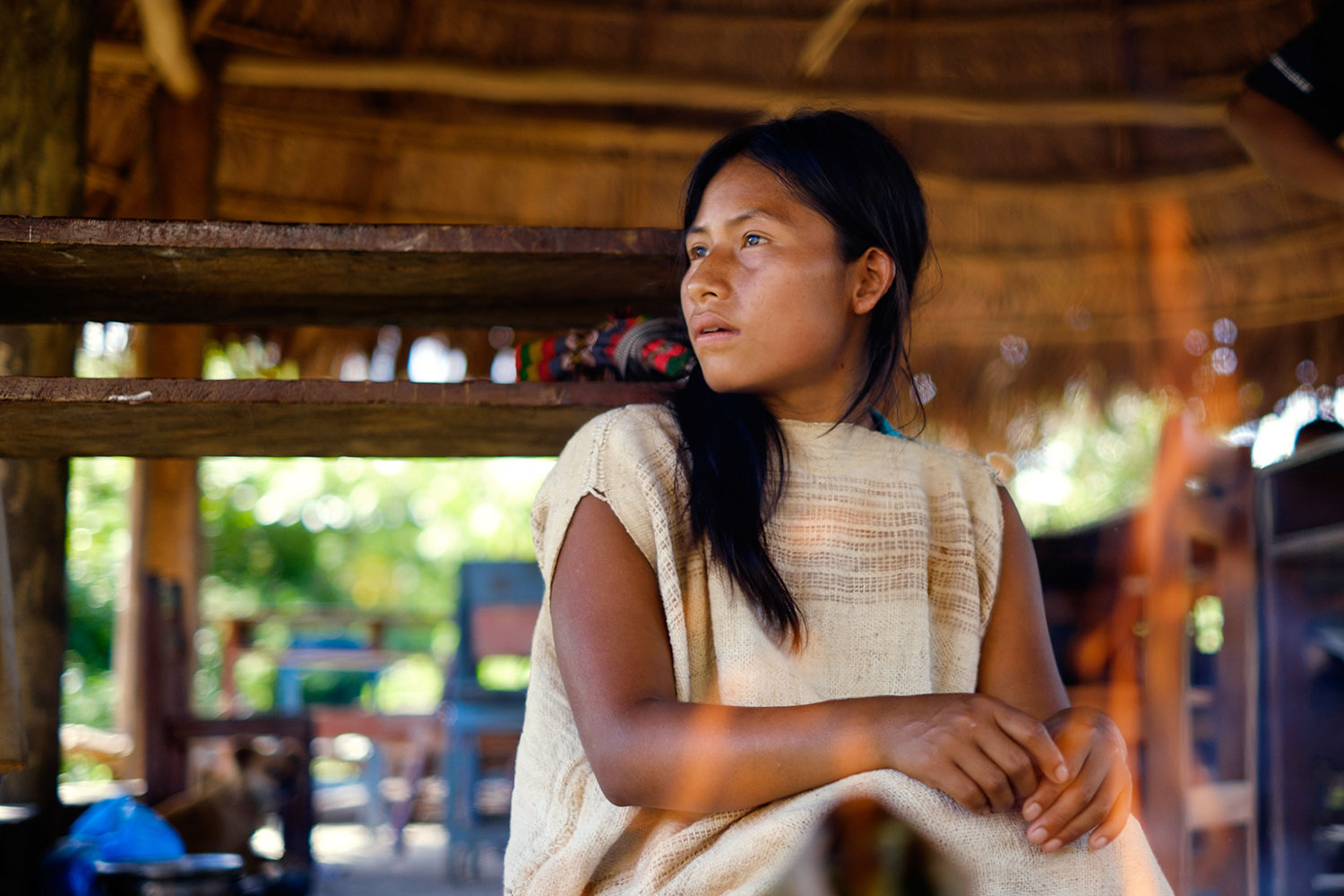
The community of Yomibato lies is in what is known as the “restricted area” of Manu, a zone of legal protection that is only accessible with express permission of the community leaders and the Peruvian government. Two security checkpoints along the Manu River manned by members of the Peruvian environment ministry function both to prevent unauthorized access to the community and to restrict the flow of natural goods out of the park, such as illegally sourced timber or animal products. This distinction allows the citizens of Yomibato a rare opportunity for indigenous communities: a sense of autonomy and control in their interactions with the outside.
Yomibato is also one of the most geographically remote communities in Peru. To arrive here our team has traveled over 600 kilometers down the winding mountain passes of the Andes and up the thickly wooded riverbanks of three different tributaries of the Amazon. We have spent more than 36 hours in a boat riding down the clear rushing waters of the Madre de Dios River, past its confluence with the thick, brown, slow-moving outflow of the Manu River and up the at times impossibly narrow and shallow ravine of the Yomibato River. The latter section is an arduous trek. The Yomibato is much smaller waterway that is extremely difficult to navigate even in the best of conditions. In the dry season, when the river is low, the community of the same name is accessible only by a seven-day hike through the rainforest from their closest neighbors. In the river’s more difficult sections we are regularly forced to get out and carry the boat over shallow portions of the riverbed. In these moments it is impossible not to think of the several black caiman we have sighted sunning themselves on the sandy beaches on the way upriver. At one point we encounter a fallen tree that blocks our path. Mario, our young but highly capable boat captain, orders us to disembark as he revs the engine and charges at the only submerged section of the tree’s trunk. He hits it with just enough force to slide the boat’s hull across to the other side. It is not a journey for the faint of heart.
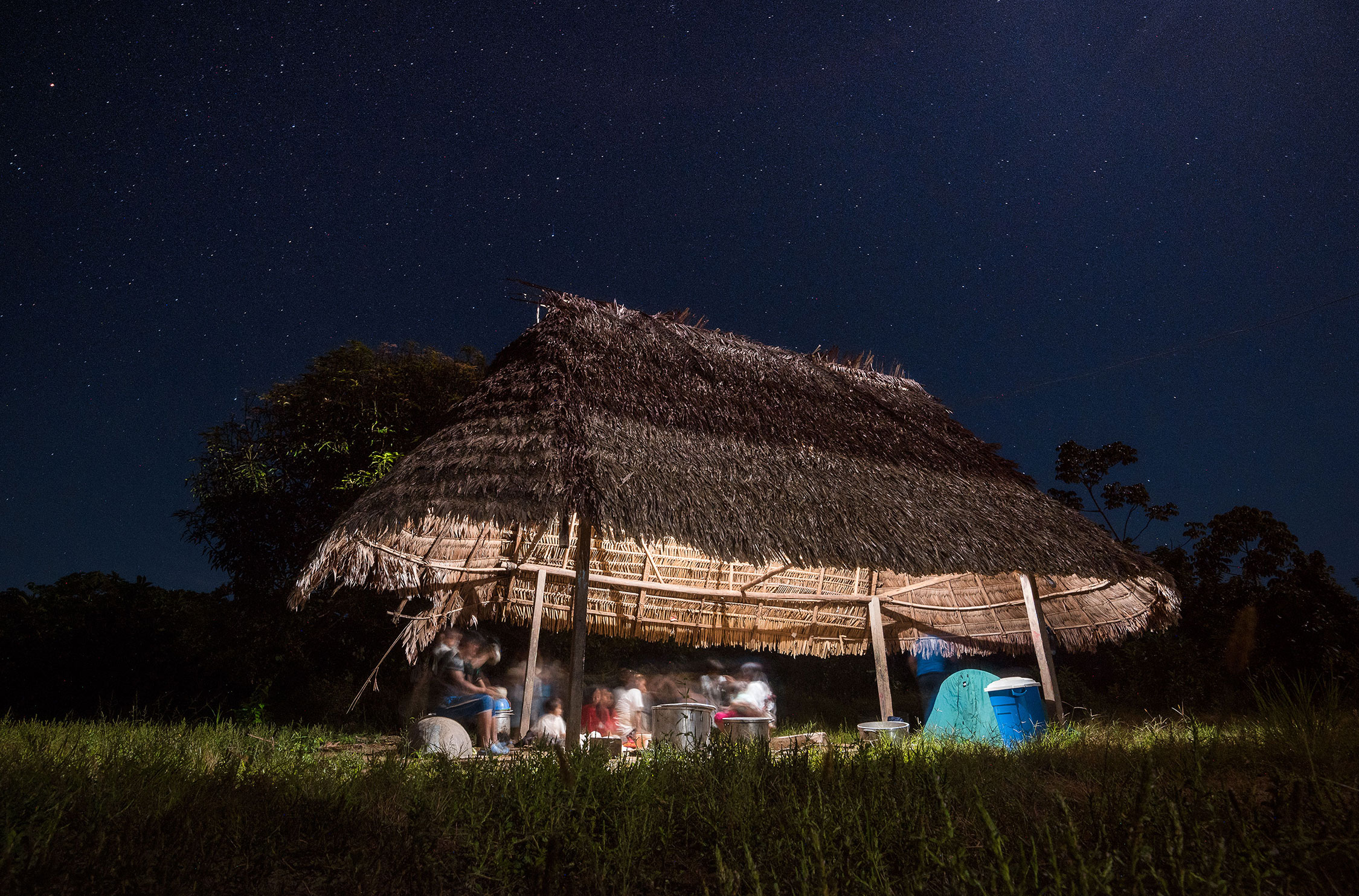
Returning to the community of Yomibato after our failed hunt, aspects of their relative isolation from outside influence are immediately clear: children wear traditional Matsigenka tunics, called cushmas, to attend an outdoor classroom. Lessons here are taught both in Spanish and Matsigenka. It is the only school of its kind. Women wear colorful necklaces adorned with seed casings and nut-shells, as well as traditional silver nose rings. Infants are painted with huito, a temporary dye made of crushed fruit pulp and water, believed to ward off biting insects. Elements of the outside world are also present. The wooden schoolhouse is lined with solar panels to produce electricity for lights. Nearby there is a health post stocked with vaccines, antibiotics and other western medicines. The widely spread out settlement uses strategically placed radio units to communicate important messages and coordinate communal events. From an outsider’s perspective, to walk in Yomibato feels much like walking with a foot in two distinct worlds. However, for the residents of this remote community, their world is as coherently whole as any other.
Benito Chinchiquiti and his wife Romualda Yotoni have been schoolteachers in Yomibato for over thirty years. While both were born in the Andean foothills in the Quillabamba region of Peru, they are ethnically and culturally Matsigenka. Their command of both Matsigenka and Spanish helped them create a unique curriculum that combines lessons both languages. As indigenous people educated in the Catholic mission system of Peru, they also have a unique perspective on the cultural dynamics of their people. They have made it their mission to encourage the protection of their cultural history while preparing students for life outside the Park. Chinchiquiti explains, “Clearly the children must learn Spanish in order to get work [outside], to make money. But it is equally important that they learn their native language. They must learn to have pride in themselves and where they come from.”
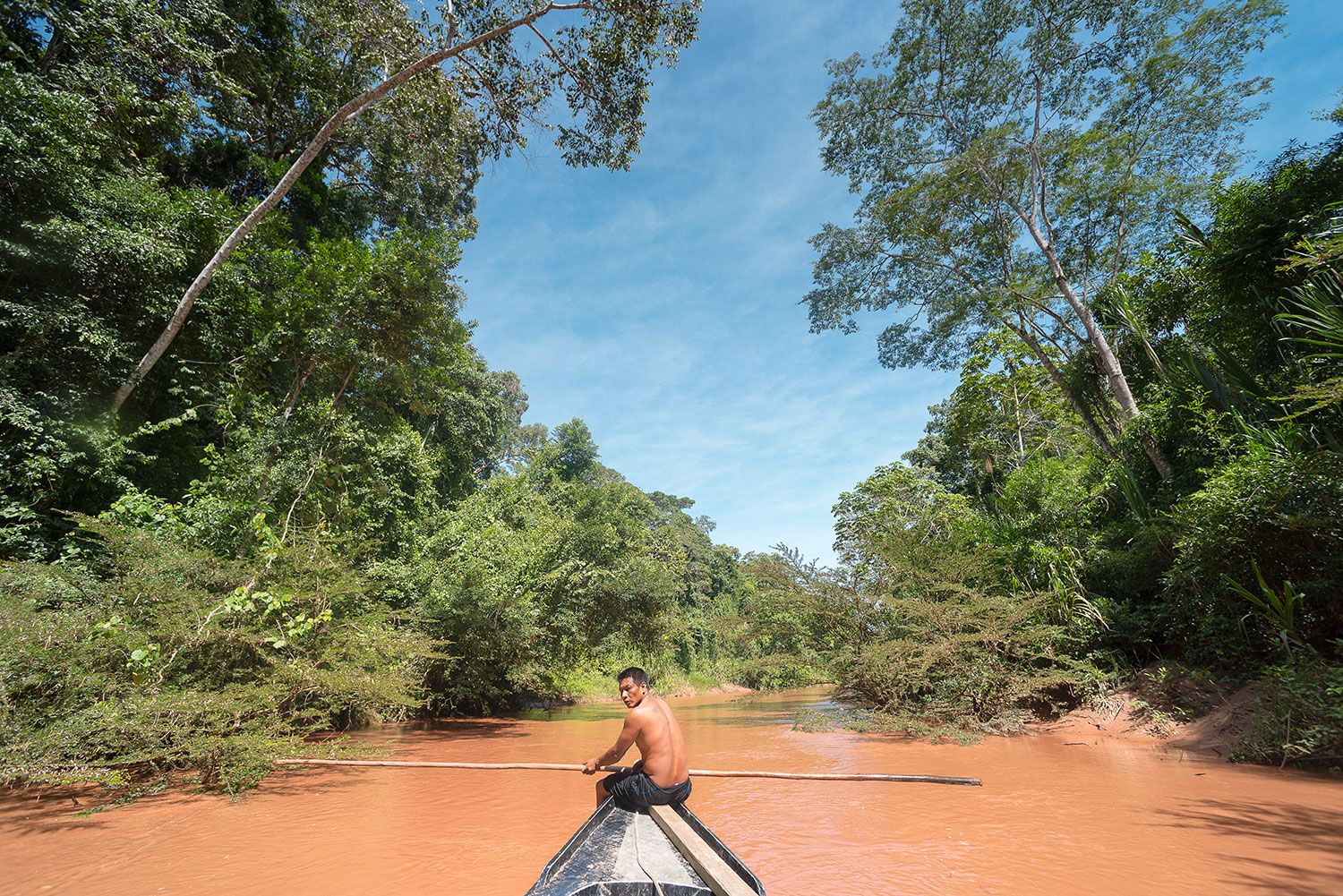
To that end Chinchiquiti delivers a daily message before the beginning of class to the assembled students. He alternates between Matsigenka and Spanish, expounding upon the combined importance of education and respect for cultural tradition. “It is hard to be indigenous. People try to tell you that being indigenous is bad, that we are stupid or incapable. We tell the students ‘you are not stupid.’ We tell them that indigenous people are some of the strongest and most capable people, that we have survived a lot and we are still here.” Yotoni adds “It is difficult because while we tell them to be proud of their traditions they must also always be thinking about how to make money. They must consider how they will work and eat and make a life for themselves. We have to be sure we are teaching them that as well.”
The need to adapt to a modern way of life led Chinchiquiti and Yotoni to implement a policy that all community members must wear solar-powered digital watches. This allows students to arrive to classes on time, and helps parents get used to keeping a regular schedule. While this may seem like a basic necessity to those born in western countries, in Matsigenka culture it represented a major shift. Yotoni explains, “In order to get and keep a job [outside] you have to show up on time. People always say indigenous people are lazy and show up whenever they want, but that is just because [traditionally] we have never had to know what time it was. This helps everyone to get work and make money.”
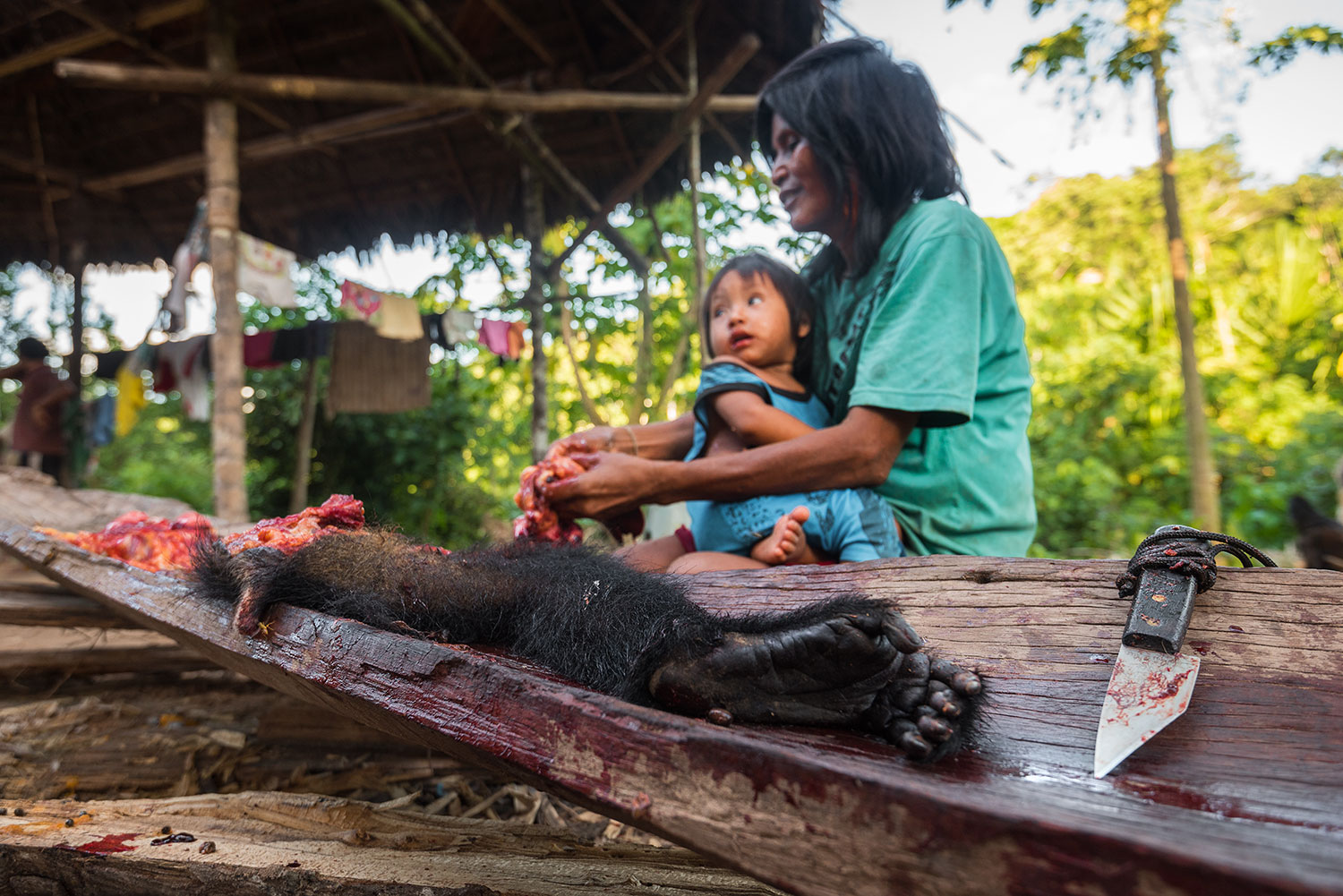
Worries about money and employment are not unique to Yomibato. During our journey through the various indigenous communities on the way into Manu National Park, the conflict between disappearing cultural values and the need to adapt to a modern economy has been a pervasive theme. Many communities are struggling to escape the destructive legacy of extractive industry, born during the disastrous rubber boom of the 1890s. During that time an estimated 90 percent of indigenous residents of the some Amazonian regions were killed or enslaved. In place of other damaging and exploitative industries such as oil and gold, many communities outside the restricted area are turning to tourism.
While it is understandably impossible to bring tourism to the restricted area of the park, Yomibato and the neighboring community of Tayakome jointly operate an eco-tourism lodge below the final security checkpoint on the Manu River. Their lodge, Casa Matsigenka, is one of the only tourist destinations that allows visitors to sleep inside the National Park, as well as interact directly with residents of the inaccessible communities of the restricted area. The profits from the operation are managed at a central office in Cusco, and then disbursed to community members who appeal to the director for grants based on their needs. This allows the communities to benefit from tourism in the park without receiving regular visits from outsiders.
According to Indiana University anthropologist John Bunce, who has worked extensively in the restricted area of Manu, this kind of one-way boundary may contribute to the maintenance of unique cultural elements. “The boundaries imposed by park officials afford the communities some control over the nature of their interaction with the outside.” Although he is quick to add, “it is a separate but important question whether such boundaries are desired by the communities themselves.”
Indeed, not all of the residents of Yomibato are interested in resisting the forces of change. Many, especially the younger generations, are embracing elements of the outside world that they feel will improve their lives.
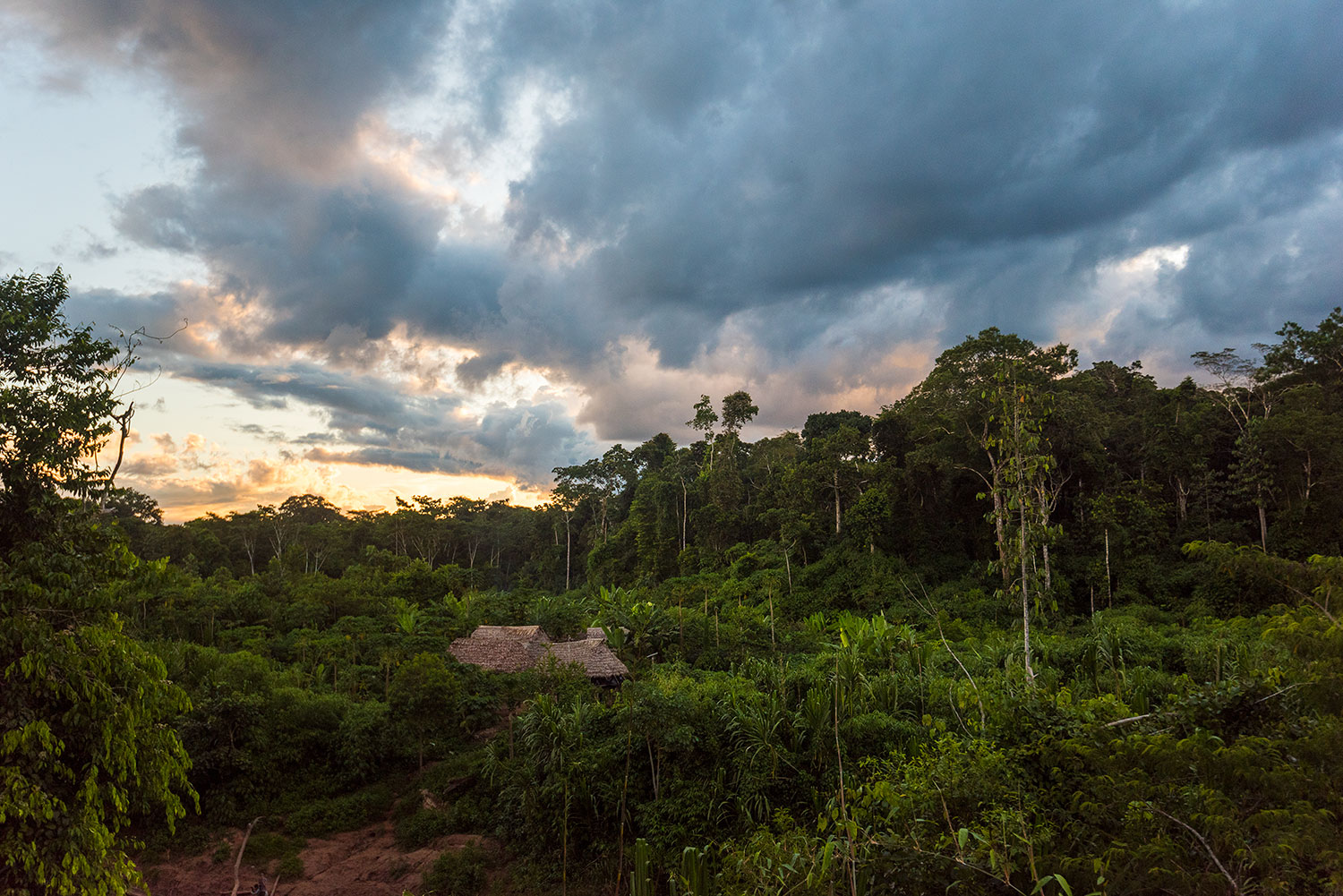
Rita Mambiro is a 19-year-old woman who has spent her entire life in Yomibato. When she meets us her arms are colored black by thick layers of huito juice, a stark contrast to her pink and white striped cotton tank top. While she proudly identifies as Matsigenka, she is part of a growing number of young women who are resisting elements of traditional Matsigenka gender roles. She explains her rejection of the jaula (Spanish for cage), a coming of age ritual for Matsigenka women. Upon their first menstruation women are sequestered alone, away from all other community members. During this time only their future husbands or a male relative are allowed to visit them to bring food and water. There is no prescribed limit for this period of isolation, and Mambiro tells us that her mother was kept in the jaula for three years. When it came time for Mambiro to enter the jaula, she told her mother she was not willing to go. “I said I was going to continue going to school.” She has also rejected the traditional idea that she will have a large family and forego paid work to work in the family fields and raise children. “I want to go to Puerto Maldonado to study to become a chef.” This is not to say that Mambiro plans to abandon all of her traditions. She proudly speaks of learning how to weave a cushma from her mother, and how she plans to teach her children to speak her native language. For Rita, and the women of her generation, cultural preservation is not a black and white option, but an opportunity to weave a tapestry of cultural traditions for future generations of Matsigenka children.
Across town Jesus Shumarapague (Marcos’ son) is currently the technician at the local health clinic. At the age of 15 he left to receive his education in Puerto Maldonado, which, at a mere four-day journey, is the nearest city. His decision to leave the park was not an easy one, as Jesus explains, “I had to lie and say I was only heading to [the small town of] Boca Manu to work for a few weeks. The community president and the park guards both tried to stop me from leaving, but I knew I had to go. I couldn’t see any opportunity here.”
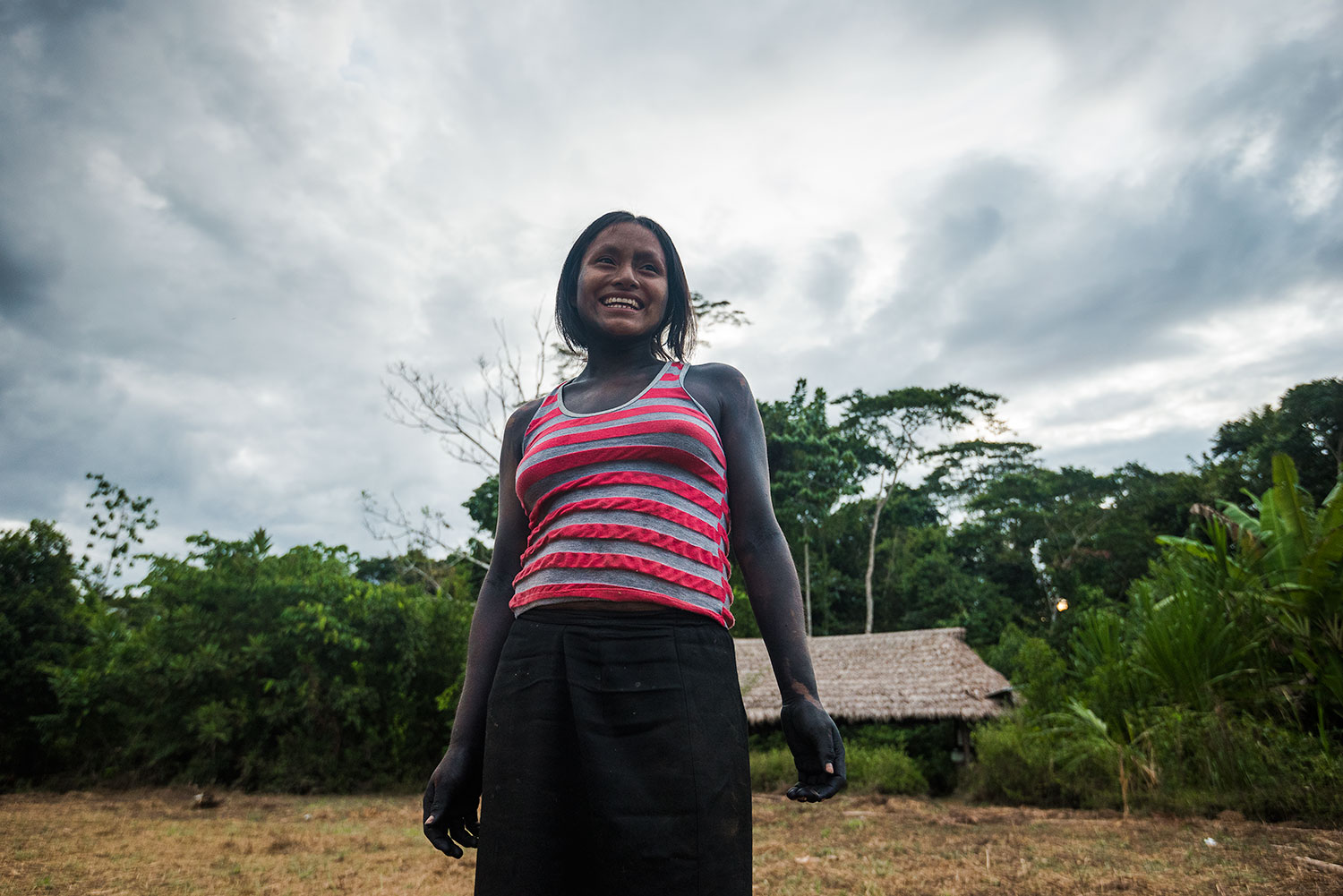
Once Jesus arrived in Puerto Maldonado he found life outside of the park to be more difficult than he anticipated. “I worked two jobs just to pay my tuition. I had nothing to eat.” Despite his struggles he felt that the benefits of his education were great enough to endure. “Once you have seen what there is outside, you have to see more. You cannot live without knowing.” The long road to an education ultimately brought Jesus back to his home in Yomibato. “I saw a posting for a job here, and I felt I really wanted to come back. I understand this place, and I wanted to see my family again. I want to show them why I left.” For Jesus, his relationship to his home is a complicated mix of nostalgia and a sense of restriction. Over the course of three days I would ask Jesus three times where he would want to settle down and live when it comes time to have a family. Twice he answers that he would someday live in Yomibato, and once he tells me he would live outside of the park.
The internal conflict that Jesus describes is a microcosm of the relationship of his people to the outside world. While the benefits of development are at times self-evident, there is a core of identity that most would be loath to abandon. As Chichiquiti explains, “We are proud of who we are. We feel we have much to teach the world. We know how to live in the forest, how not to destroy it. We know many things that the people outside do not.” He envisions a world where the knowledge of his indigenous people is held in esteem alongside the beliefs of the outside. “For us to have peace in this world we need to respect all cultures equally. Not dominate each other as we have in the past. We are all equal; we are all people.”
Anthropologist Wade Davis has famously written, “Change itself does not destroy a culture. All societies are constantly evolving. Indeed a culture survives when it has enough confidence in its past and enough say in its future to maintain its spirit and essence through all the changes it will inevitably undergo.” In many ways the residents of Yomibato appear not to be resisting all of the changes that have been thrust upon them. Instead they look to engage with their future in a more equitable and autonomous way, one that acknowledges and respects their history and way of life. Not only is this the most morally agreeable option, it may in fact be the best thing for the future of our planet and its people.
The Manu Project is a multimedia effort made up of journalists, photographers and filmmakers who spent a month traveling and living among the communities of the Manu region of the Peruvian Amazon. You can see more of their work at www.manuproject.com
This story was part of The Outdoor Journal Autumn 2016 print edition.


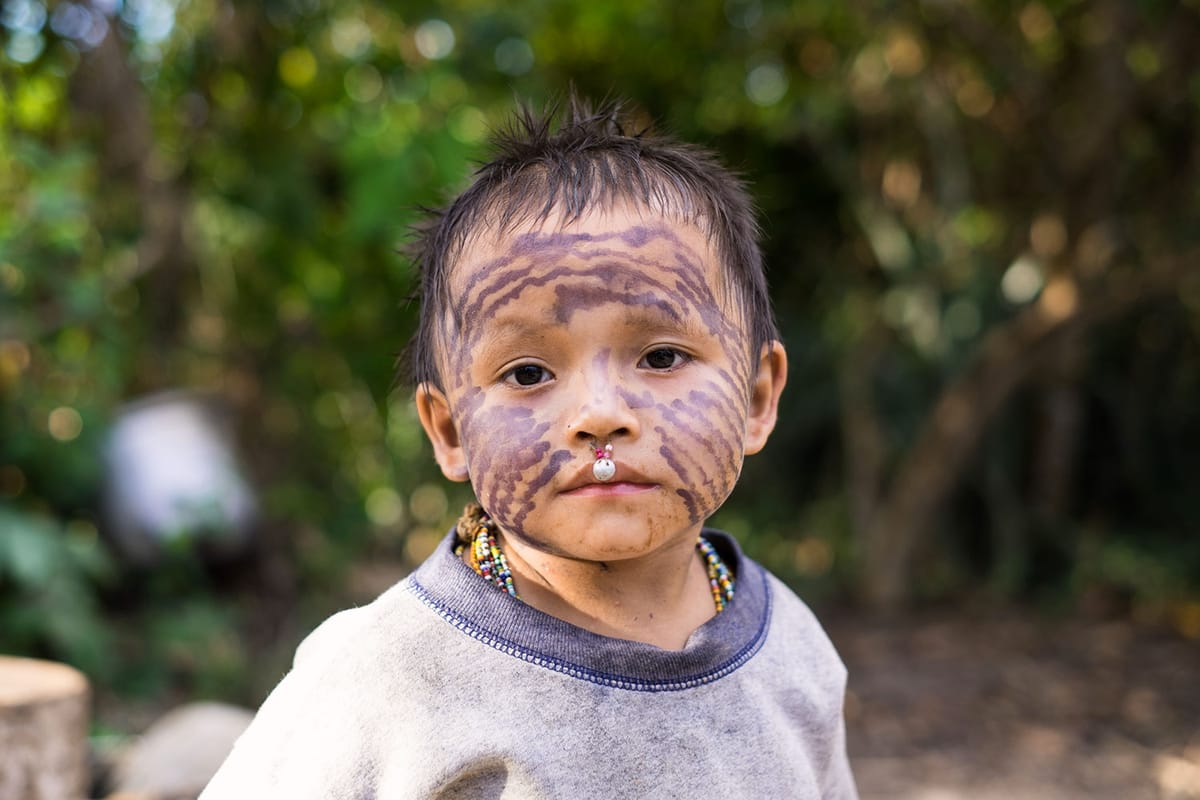
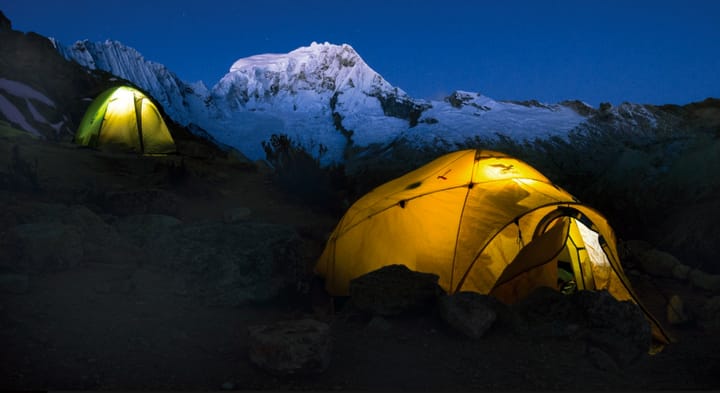
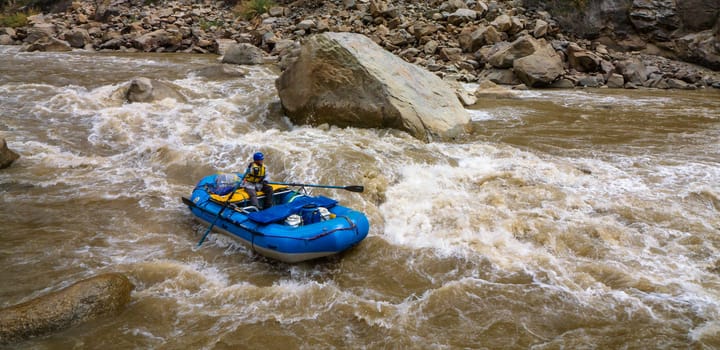

Comments ()